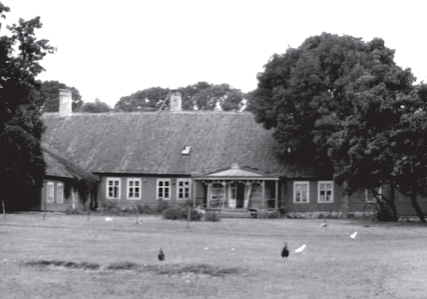Kõrgessaare Manorial Estate

Kõrgessaare manorial estate was established in late 16 century by Russian boyar Perwoy Putilov who went over to the Swedes in the Livonian War. It is a small 9-ploughlands manorial estate which was extended on the account of Kõrgessaare village by its later owner Count Jakob De la Gardie. He was granted the possession of two thirds of Hiiumaa for the services rendered to the Kingdom of Sweden and as an enterprising person, he established on the island the first Estonian glass factory. He also established the first regular shipping service from Kõrgessaare harbour to Stockholm in order to market his production in Sweden.
De la Gardie’s possessions were nationalised in 1691 by the state of Russia and Countess Ebba Margaretha Stenbock applied for the restitution of the land in 1755. Since 1781, the manorial estate belonged to the Ungern-Sternbergs.
The main building of Kõrgessaare estate is destroyed; the warehouse, the estate manager’s house, the servants’ building, the stables and parts of two lime kilns are preserved. A storehouse for spirits which was built in 1880 is preserved better than other buildings.
A public limited company La Viscosa which was owned by foreign shareholders bought in 1911 470 hectares of the estate’s lands and started to build a silk factory in 1912. They never got further than trial production in 1914 the First World War started and in 1917 the main parts of the factory were blasted. However, the peculiar name of the factory -Viskoosa remained and is nowadays used as a common name of Kõrgessaare country town.
It is a waypoint on the journey
You might also be interested in:
